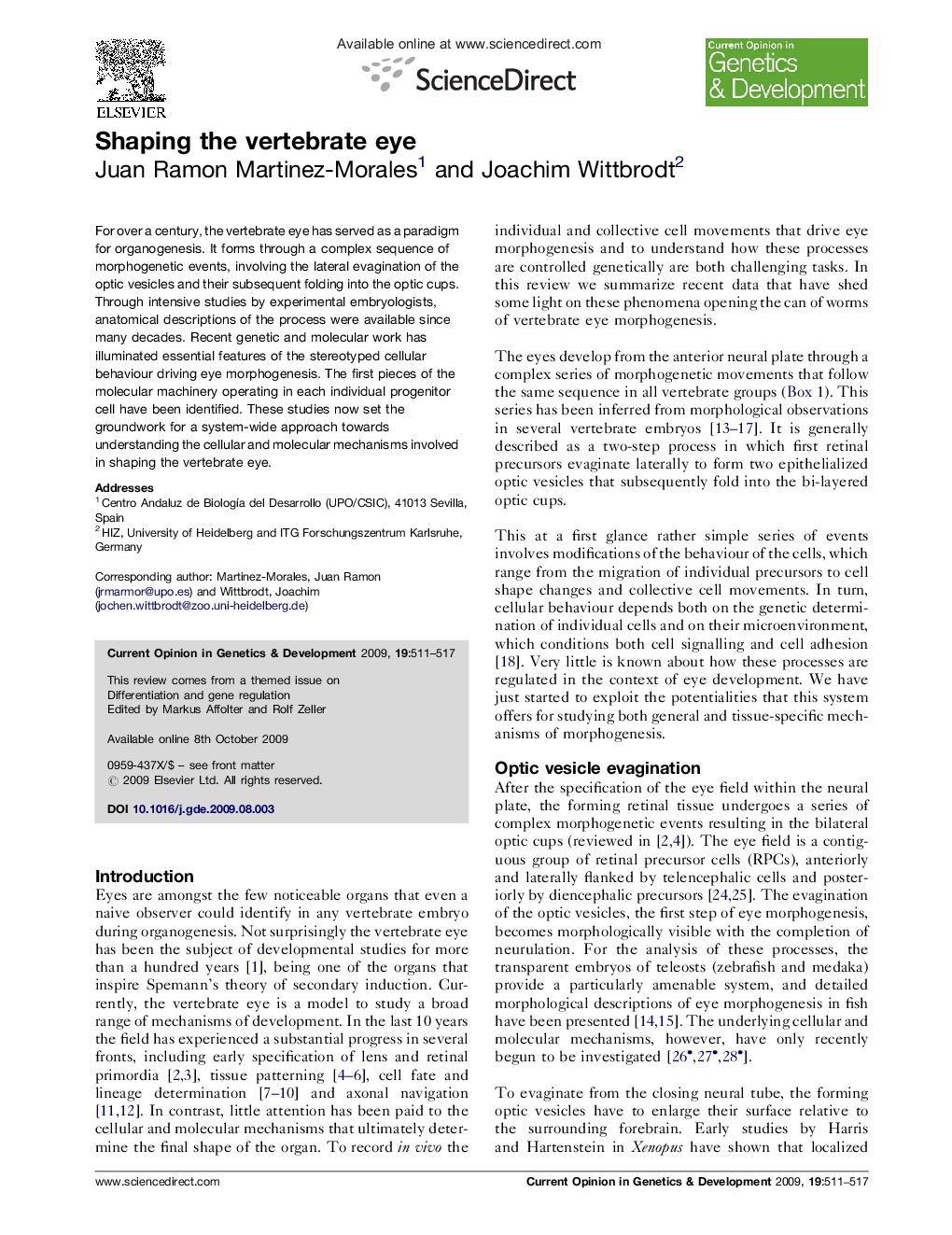| Article ID | Journal | Published Year | Pages | File Type |
|---|---|---|---|---|
| 5893829 | Current Opinion in Genetics & Development | 2009 | 7 Pages |
For over a century, the vertebrate eye has served as a paradigm for organogenesis. It forms through a complex sequence of morphogenetic events, involving the lateral evagination of the optic vesicles and their subsequent folding into the optic cups. Through intensive studies by experimental embryologists, anatomical descriptions of the process were available since many decades. Recent genetic and molecular work has illuminated essential features of the stereotyped cellular behaviour driving eye morphogenesis. The first pieces of the molecular machinery operating in each individual progenitor cell have been identified. These studies now set the groundwork for a system-wide approach towards understanding the cellular and molecular mechanisms involved in shaping the vertebrate eye.
